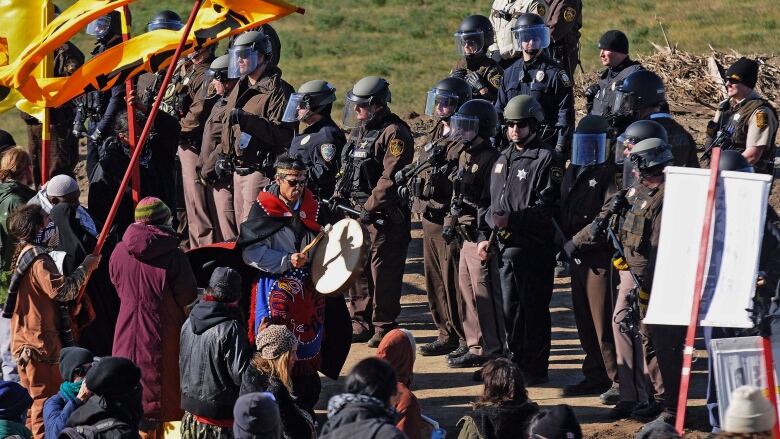What local Indigenous movements can learn from Standing Rock protest
UBC professor hopes people will engage in more than just 'hashtag activism'

While protests against the Dakota Access Pipeline in North Dakotahave inspired an outpouring of support and solidarity, a professor says people can do more to support similaractions here in Canada.
Since April, the Standing Rock Sioux in southern North Dakota have been protesting the construction of a pipeline which would carry oilneartheir reservation.
For months, thousands of Indigenous people and activists have gathered on their land in solidarity.
The response from the U.S. government has been to arrest and evict protesters. Two grad students from the University of Northern British Columbia who travelled to the Standing Rock protest were recently arrested and released.
In Canada, people from Kahnawake territory nearMontreal to Saskatoon have shown their support with local events.
Online, a Facebook campaign urged users to "check in" at the Standing Rock protest as a way of showing support.

For University of British Columbia Indigenous Studies professor Sarah Hunt, the displaysof solidarity are impressive, but she questioned whether people will continue to remain engaged.
"What happens the next day? What happens when people leave that protest? What happens when things die down?" she asked.
Hunt said there are similar issues affecting Indigenous communities in B.C. that don't get the same attention as Standing Rock.
"It's hard to know exactly why this struggle has got the public attention that it has," she said.
"I do think that a lot of what's happening in Standing Rock is happening everywhere ... it's just happening out of sight. Making that visible has been slow."
Strategies from Standing Rock
Hunt saidlocal movements can learn from the Standing Rock protest to make their own campaigns more visible.
For example, the Standing Rock protesters have been using social media extremely effectively.
"Now that we can see videos and photographs up to the minute, it make it feel very present," she explained.

Hunt contrasted the Standing Rock protest with those against BC Hydro'sSite C project in northeastern B.C. The hydro protests havelargely taken place within the court system, which she said have been unsuccessful because it isless public.
"Unless you can see it, you can't relate to it."
The B.C. Supreme Court recently denied a petition by two B.C. First Nations to overturn the permits for the construction of the Site C dam.
With files from The Early Edition
To hear the interview, click on the link labelled UBC prof hopes solidarity with Standing Rock will inspire more local action












_(720p).jpg)


 OFFICIAL HD MUSIC VIDEO.jpg)
.jpg)



























































































